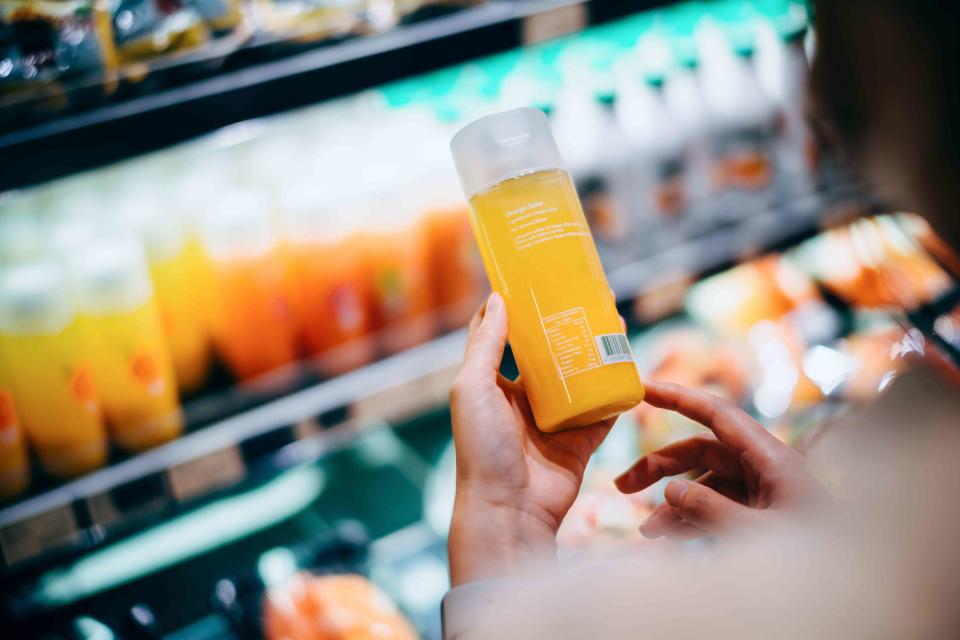The Wildly Misleading Nature of 'Natural' Labels on Food
A USDA report reveals that “natural” claims on packaging mean a whole lot less than most people think.

On the crowded supermarket shelves, food products clamor for attention, donning packaging and labels designed to clinch the deal. Some 72% of American consumers say that product packaging influences their purchase decisions—a statistic not lost on food manufacturers. This applies to not just the aesthetic design of packaging but what the labels say as well.
Louis Biscotti, the National Leader for Food & Beverage Services Group at Marcum, writes in Forbes that when the FDA updated its nutrition facts label for packaged foods in 2020, companies found new opportunities to increase sales. “F&B [food and beverage] companies are finding they can use those labels and other real estate on their packaging to provide nutritional and other data to drive growth. The information on the FDA label and what you pack onto your label and packaging can be important ingredients in boosting sales.”
He adds that 30% of U.S. consumers surveyed are more likely to buy products with sustainable credentials and that “clean label” characteristics can “win over consumers—touting a product as USDA organic, non-GMO, free of artificial ingredients, or free of preservatives.”
Labeling can be very helpful when determining certain things about a food item. “USDA Organic” and “raised without antibiotics,” for example, have specific standards, and the product will need to be true to those claims.
When it Comes to “Natural,” Things Get Slippery
A new report from the USDA Economic Research Service takes a look at the prevalence of the “natural” claim on food packaging—and it’s eye-opening.
“[F]ood suppliers can use the label that claims the food is “natural” at a relatively low cost because regulatory agencies treat the claim as meaning nothing artificial was added and the product was minimally processed,” the authors explain.
Natural claims like “all natural,” “100% natural,” and “made with natural ingredients” are not defined in USDA, Food Safety and Inspection Service (FSIS) regulations. The USDA, FSIS must approve these special claims prior to food being sold, but the only standard they must meet is that artificial ingredients or colors cannot be added during processing, and the processing method cannot fundamentally alter the product.
While that is certainly valuable information to know, the problem is in consumers’ perception of what “natural” means.
“Neither the FDA’s nor USDA’s policy decisions address the health benefits or farm production methods consumers might attribute to natural-labeled foods," write the authors. "The definitions do not address human health, the use of synthetic pesticides, genetically modified organisms, hormones, or antibiotics in crop and livestock production.”
What Most Consumers Get Wrong About “Natural”
Study after study on the topic reveals that people think a product labeled as “natural” delivers benefits far beyond what it does, with most consumers mistakenly assigning health and environmental stewardship attributes to natural-labeled food. The report cites the following, among others:
In a 2017 study, respondents incorrectly believed that natural-labeled foods had 18 percent fewer calories across a variety of foods.
In a 2010 study, respondents believed that meat products labeled as “all natural” meant no antibiotics or hormones were used to raise the animals. Some also believed the label meant animals were raised free range.
In a 2022 survey of 86 percent of respondents who purchased at least one natural-labeled product in the past 12 months, 89 percent of those reported doing so because they believed the label indicated better-than-standard animal welfare. In addition, 78 percent paid more for the label because the consumers believed the label indicated higher environmental stewardship production practices.
Also from the 2022 study, 59 percent of consumers who reported purchasing animal welfare-certified products also reported purchasing natural-labeled foods because they believed it represented improved animal welfare standards.
Other studies showed that consumers equated the attributes of USDA Organic products with those of natural-labeled products and were willing to pay more for them. Another found consumers were willing to pay 20 percent more, on average, for natural-labeled products.
The Impact of These Misconceptions
At first, this might simply seem frustrating—that food manufacturers are capitalizing on consumer naivete to boost prices. And that consumers aren’t getting what they think they’re getting. But the more serious problem is how this harms food producers who are actually meeting the standards for more stringent labels that are actually doing good, like ones around organic practices or animal welfare. Farmers and producers doing the work end up at a competitive disadvantage in the marketplace if consumers treat foods labeled natural as alike.
“The economic problem raised by natural labels is that consumers could be paying extra for product attributes they are not receiving while producers of products with those attributes lose sales,” write the authors. “As a consequence, any health and environmental stewardship benefits that might have been realized from consumers choosing products that matched their preferences could be lost.”
Learn More About Labels

